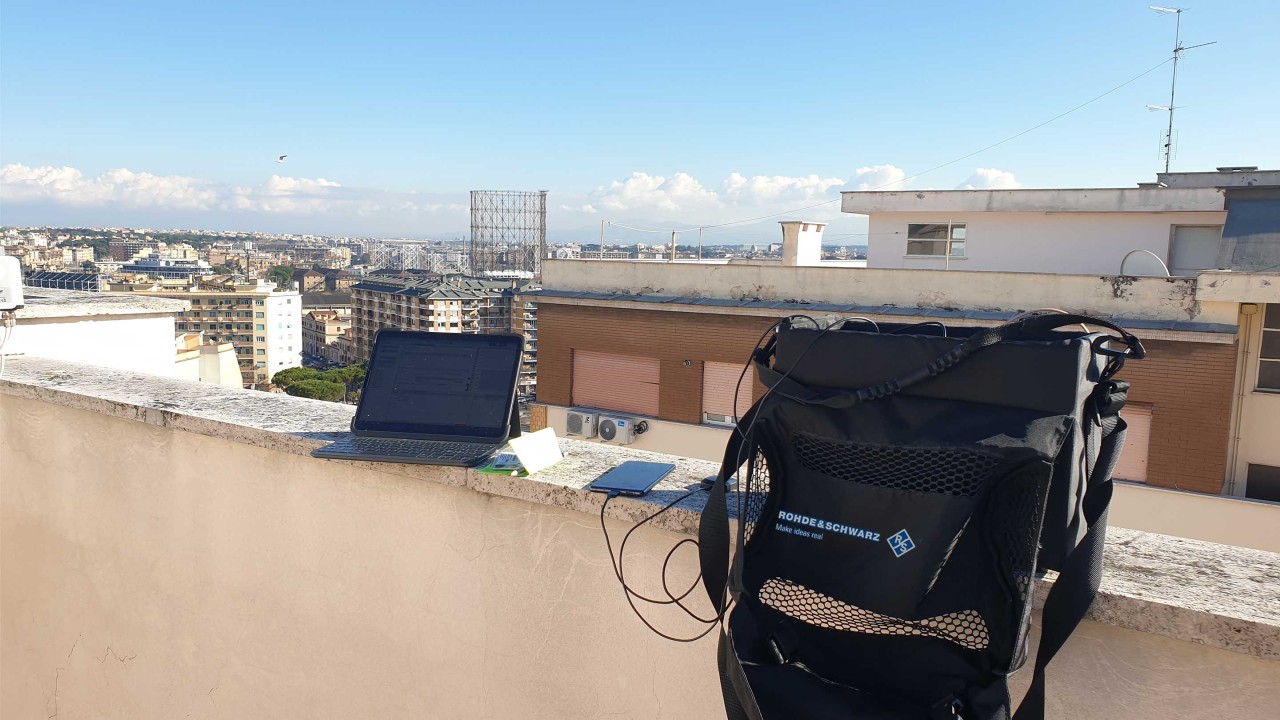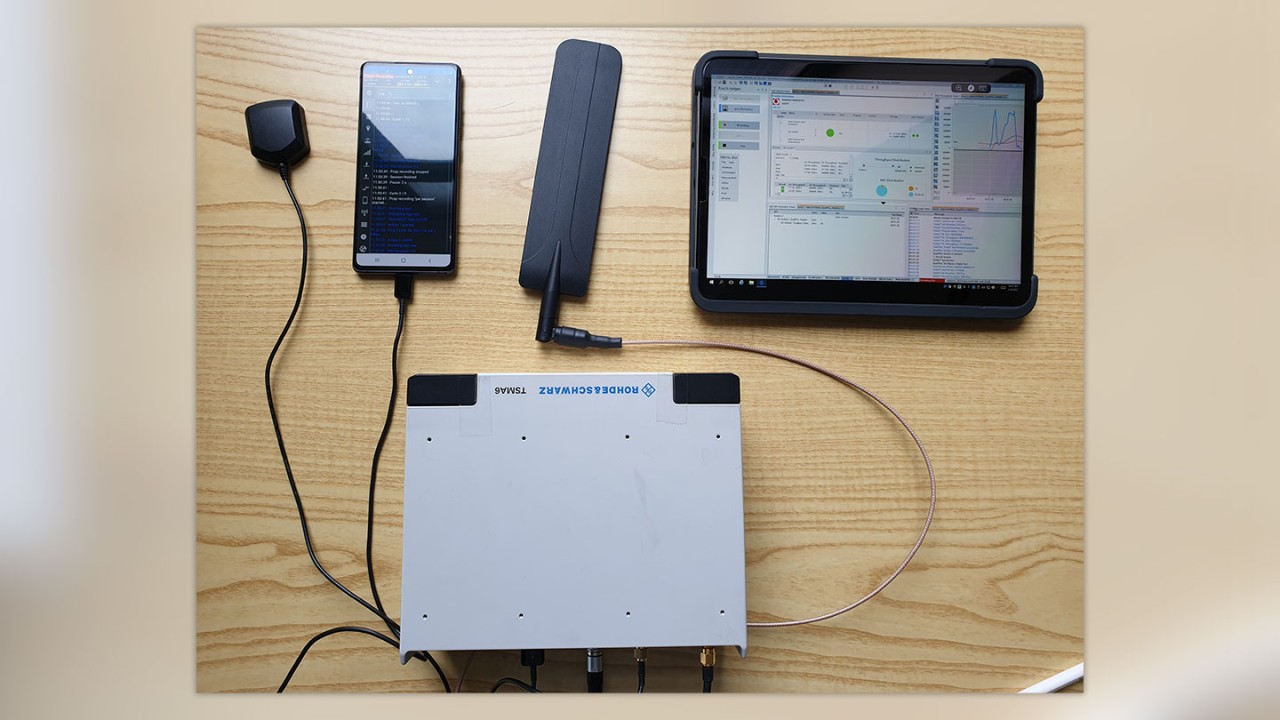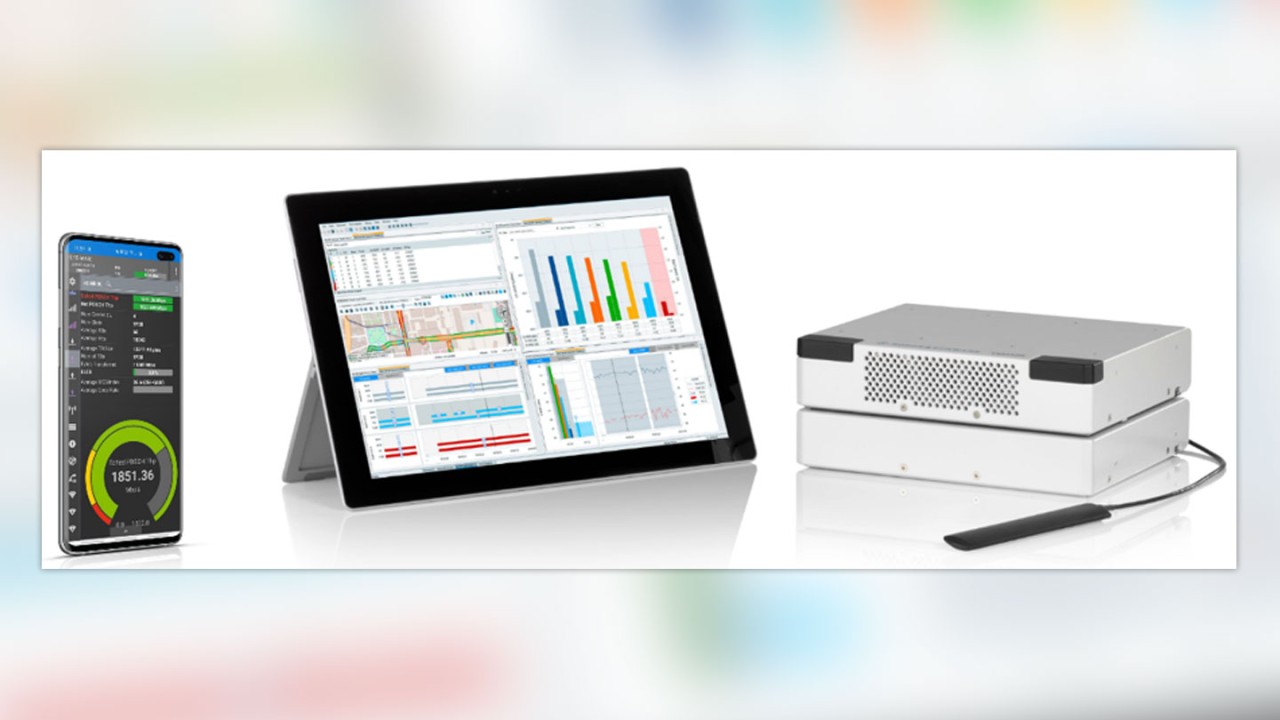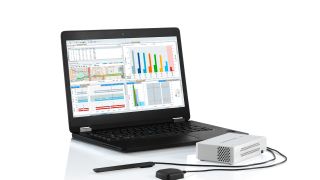Written by Marco Neri | November 25, 2022


In this entry I interview Özgü Alay, PhD, Associate Professor at the University of Oslo, and Giuseppe Caso, Experienced Researcher at Ericsson Research, Stockholm.
We go a long way back: I have known Giuseppe since his time at Sapienza University in Rome. We have collaborated often in the past. Back in December 2020, when Giuseppe was working with Özgü in Oslo at Simula Metropolitan Center for Digital Engineering (SimulaMet), we started thinking about how to perform the first measurements of Italian commercial 5G networks. No official studies of real networks had been done at the time and we thought it would make for innovative research.
Marco Neri: Could you please tell us more about the research collaboration and its structure? What inspired it?
Giuseppe Caso:
In December 2020, I asked you, Marco, about a potential large-scale measurement campaign of 5G networks in Rome with a Rohde & Schwarz setup. 5G non-standalone (NSA) setups were hitting the Italian market and the measurement campaign would make us some of the first researchers in the world to analyze multiple aspects of 5G networks under real world conditions.
When R&S agreed to the campaign, we were very excited!
The collaboration included SimulaMet, Rohde & Schwarz, Sapienza University of Rome and Karlstad University, with students, researchers and professors all involved*.
We started by selecting the test solution, which included the R&S®TSMA6 scanner, R&S®ROMES4 software and QualiPoc Android. We could perform both passive and active measurements on the available cellular networks in Rome with this setup.
Overall, the campaign took seven weeks from December 2020 to January 2021 and covered two Italian network operators providing 4G, NB-IoT, and 5G NSA connectivity in Rome. Tests were performed under different environmental scenarios, including outdoor measurements while walking and driving the streets of Rome and indoor stationary tests in different buildings, such as the Department of Information Engineering, Electronics and Telecommunications at Sapienza University.
Once the campaign was completed, we set up a well-organized pipeline with data exporting, processing, and preparation. We then started our analysis and publicized several key insights at conference venues and in journals.
LinkedIn Post Giuseppe Caso, Experienced Resarcher at Ericsson Research
*Professor Luca De Nardis, Usman Ali (Sapienza University) Konstantinos Kousias (SimulaMet), Professor Anna Brunstrom, Mohammad Rajiullah (Karlstad University)


It has been a long journey with many different stakeholders. I found working in an academic environment a great experience. The different approach was interesting and the project generated a lot of excitement in the scientific community.
Marco Neri: Could you summarize the results so far?
Özgü Alay:
We were the first group to examine and explain European 5G deployment and performance. The measurements we collected explained the performance impact of different 5G enablers. The operators in Italy used different methods: one used dual connectivity that allowed phones to connect simultaneously to 4G and 5G, while another operator used beamforming that directs the signal at a certain angle to improve its strength.
We were able to analyze the impact of different approaches on performance. We also observed that 5G was still in its early stages, and current non-standalone (NSA) deployments suffered significantly from handovers (e.g. transitions from 4G to 5G). Our analysis also showed that even though 5G downlink throughput was significantly better than 4G, 5G did not generate expected gains in latency and uplink throughput.
Our results and datasets have attracted a lot of attention in the scientific community and we have had interesting discussions with colleagues in Europe and around the world about the current mobile ecosystem and how our measurements can help improve it.
We used both scanners and devices, controlled by R&S®ROMES4 for these activities whereas R&S®TSMA6 scanners detect and track the 5G, 4G and NB-IoT cells around the city to assess coverage. We also performed active performance measurements on some QualiPoc Android devices to evaluate quality of experience.
Marco Neri: As you were actively involved in the data collection, could you please tell us what you thought of the tools? How did you perform the measurements?
Giuseppe Caso:
I really think our test setup was great. The scanner and device combination, along with R&S®ROMES4 and QualiPoc Android let us flexibly and smoothly perform a huge number of tests.
First, we really appreciated the user-friendly, comprehensive interfaces in R&S®ROMES4 and QualiPoc Android Before and during the measurements, the interfaces let us easily configure our tests and monitor their performance during runtime. Afterwards, R&S®ROMES4 enabled the very flexible export of data. R&S®ROMES4 replay mode was particularly useful, since we could review the same measurement several times to analyze it from multiple aspects.
We also appreciated the measurement capabilities of the test solution. We collected impressive amounts of data and data-driven analysis of modern communications systems is crucial to both research and industry, and will be more so in the future thanks to machine learning and artificial intelligence.
The Rohde & Schwarz solution allowed us to really get into the details of network operations, protocols, configurations and performance to understand correlations and causality that can then be used in the key insights for the telecommunications community.


We love this feedback. I was really impressed by how quickly you were able to master the system. It is very good to see universities and research labs benefit from our solutions. And of course, we look forward to working together with teams like yours!
Marco Neri: Are there plans for the near future? How will the collaboration evolve?
Özgü Alay:
Mobile ecosystems are changing rapidly and operators are slowly starting to move towards 5G standalone deployments with new functions and improved performance, to take full advantage of 5G. Mobile network applications and services are also evolving. We are already looking at Industry 4.0, the metaverse, enhanced reality and human-robot interaction. Capturing the evolution of mobile ecosystems will be crucial in coming years and whether they can meet the requirements of future applications and services.
We are already in discussions with Rohde & Schwarz and plan to continue our collaboration. More specifically, we would like to capture the evolution of 5G technology in Europe and design and carry out new tests that mimic future services. I am really excited to see how the overall ecosystem will evolve and what we will find out next.
For more information about 5G network testing please see:
• the eGuide ”Be ahead in 5G. Trust the pioneers in 5G network testing.”







